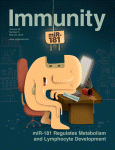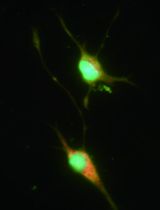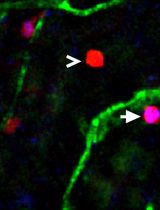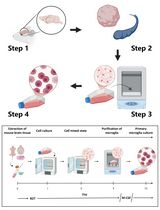- EN - English
- CN - 中文
Isolation of Cells from Human Intestinal Tissue
从人小肠组织分离细胞
发布: 2014年04月05日第4卷第7期 DOI: 10.21769/BioProtoc.1092 浏览次数: 17771
评审: Ivan ZanoniSavita NairAnonymous reviewer(s)
Abstract
The intestinal lamina propria contains a dense network of T cells, dendritic cells (DCs) and macrophages, which play an important role in local innate and adaptive immune responses. We have recently identified distinct subsets of DCs (Persson et al., 2013) and macrophages (Bain et al., 2013) in the human intestine. In addition, we have studied T cells in healthy and diseased intestine. Here, we describe two methods for isolating these cell populations: 1) enzymatic treatment and 2) migration based isolation. The enzymatic method can be used to isolate T cells, DC and macrophages, whereas the migration based ‘walk-out’ protocol is suitable for DC isolation, as these cells migrate out from the tissues.
Materials and Reagents
- Tissue specimens of small (terminal ileum) and large intestine
- RPMI 1640 (Life Technologies, catalog number: 21875-034 )
- Fetal Bovine Serum (FBS) (Sigma-Aldrich, catalog number: F7424 )
- HEPES (Life Technologies, Gibco®, catalog number: 15630-080 )
- Penicillin and Streptomycin (Life Technologies, catalog number: 15140-122 )
- HBSS (Life Technologies, catalog number: 14180-046 )
- EDTA (Life Technologies, catalog number: AM9261 )
- Liberase TM (Roche Diagnostics, catalog number: 05401127001 )
- DNase I (Sigma-Aldrich, catalog number: D4263 )
- Collagenase 1A (0.2 μm-filtered) (Sigma-Aldrich, catalog number: C9891 )
- FACS antibodies
- T cells
CD3-PE-Cy7 (SK7) (BD biosciences)
Pacific blue (PB)-CD8 (RPA-T8) (BD biosciences)
Quantum dot (QD) 605-CD4 (S3.5) (Life Technologies, InvitrogenTM)
LIVE/DEAD® Fixable Near IR Dead Cell Stain Kit (Life Technologies, InvitrogenTM)
- DC/macrophages
CD3-PE-Cy5 (UCHT1) (eBioscience)
CD19-PE-Cy5 (HIB19) (eBioscience)
CD11c-PE-Cy7 (3.9) (eBioscience)
CD103-PE (Ber-ACT8) or CD103-eFluor647 (B-Ly7) (eBioscience)
CD14-eFluor450 (61D3) (eBioscience)
HLA-DR-APCeFluor780 (L43) (eBioscience)
CD20 PE-Cy5 (2H7) (BioLegend)
TCRab-PE-Cy5 (IP26) (BioLegend)
Biotin-or PE-Cy7 CD172a (SE5A5) (BioLegend)
CD56-PE-Cy5 (Alpha Diagnostic Intl)
Biotin- or FITC-CD11c (MJ4-27G12) (Miltenyi Biotec)
CD141-PE (AD5-14H12) (Miltenyi Biotec)
CD45 V500 (HI30) (BD Biosciences)
Biotinylated antibodies were detected using streptavidin conjugated to PE-Cy7 (eBiosicence) or QDot605 (Life Technologies, InvitrogenTM).
Dead cells were excluded from analysis using propidium iodide PI (Life Technologies, Molecular Probes®).
- T cells
- R10 medium (see Recipes)
Equipment
- Cell strainer (100 μm) (Thermo Fisher Scientific, catalog number: 22363549 )
- 50 ml Falcon tube
- Polyester filters cut in 10 x 10 cm squares (mesh count 27 threads/cm, mesh opening 250 μm, thread diameter 120 μm) (Tekniska Precisionsfilter JR AB)
- Petri dish (SARSTEDT AG, catalog number: 82.1473 )
- Ultra low attachment 24-well culture plate (Sigma-Aldrich, catalog number: CLS3473 )
- Pipette
- Needle/forceps
- Surgical scissor/scalpel
- Beakers with lid (VWR International, catalog number: 216-2694 )
- 37 °C, 5% CO2 cell culture incubator
- Shaker
- Centrifuge
- Microscope
- Multicolour FACS analyser (BD Lsr II flow cytometer)
Software
- FlowJo software (Tree Star Inc)
Procedure
文章信息
版权信息
© 2014 The Authors; exclusive licensee Bio-protocol LLC.
如何引用
Uronen-Hansson, H., Persson, E., Nilsson, P. and Agace, W. (2014). Isolation of Cells from Human Intestinal Tissue. Bio-protocol 4(7): e1092. DOI: 10.21769/BioProtoc.1092.
分类
免疫学 > 免疫细胞分离 > 维持和分化
细胞生物学 > 细胞分离和培养 > 细胞分离
细胞生物学 > 细胞运动 > 细胞迁移
您对这篇实验方法有问题吗?
在此处发布您的问题,我们将邀请本文作者来回答。同时,我们会将您的问题发布到Bio-protocol Exchange,以便寻求社区成员的帮助。
Share
Bluesky
X
Copy link














